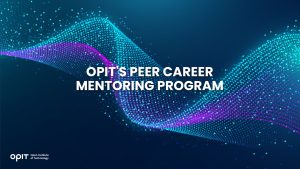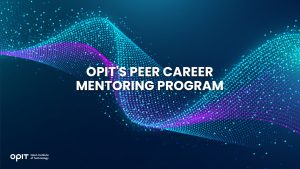

Source:
- IE University – Insights, Published on October 15th, 2024.
By Francesco Derchi
Purpose is a strategic tool for driving innovation, competitive advantage, and addressing AI challenges, writes Francesco Derchi.
Since the early 2000s, technology has dominated discussions among scholars and professionals about global development and economic trends, with the first wave of research regarding the internet’s impact on firms and society focusing on the enabling potential of technologies. The concept of “digital revolution,” as popularized by Nicholas Negroponte, became the new paradigm for broader considerations about the development of the firm’s macro environment, and how businesses could leverage it as an asset for creating competitive advantage. The following wave focused on the convergence of different technologies, such as manufacturing, and included the dynamics of coexistence between humans and machines. From the management side, the major challenges are related to defining effective digital transformation practices that could help to migrate organizations and exploit this new paradigm.
The current technological focus builds on these previous trends, particularly on artificial intelligence and more recently on the emergence of generative AI. The Age of AI is characterized by technology’s power to reshape business and society on a variety of levels. While AI’s pervasive impact is not new for firms, the mainstream adoption of ChatGPT for business purposes and the response to this ready adoption from big tech players like Microsoft, Google, and more recently Apple, shows how AI is reshaping and influencing companies’ strategic priorities.
From a research perspective, AI’s societal impact is inspiring new studies in the field of ethics. Luciano Floridi, now of Yale University, has identified several challenges for AI, characterizing them by global magnitudes like its environmental impact and has identified several challenges for AI security, including intellectual property, privacy, transparency, and accountability. In his work, Floridi underlines the importance of philosophy in defining problems and designing solutions – but it is equally important to consider how these challenges can be addressed at the firm level. What are the tools for managers?
Part of the answer may lie in the increasing and recent focus of management studies around “corporate purpose” and “brand purpose.” This trend represents an important attempt to deepen our understanding of “why to act” (purpose framing) and “how to act” (purpose formalizing and internalizing), while technology management studies address the “what to act” (purpose impacting) question. Furthermore, studies show that corporate purpose is critical for both digital native firms as well as traditional companies undergoing a digital transformation, serving as an important growth engine through purpose-driven innovation. It is therefore fair to ask: can purpose help in addressing any of the AI challenges previously mentioned?
Purpose concepts are not exclusively “cause-related” like CSR and environmental impact. Other types have emerged, such as “competence” (the function of the product) and “culture” (the intent that drives the business). This broadens the consideration of impact types that can help address specific challenges in the age of AI.
Purpose-driven organizations are not new. Take Tesla’s direction “to accelerate the world’s transition to sustainable energy” – it explicitly addresses environmental challenges while defining a business direction that requires constant innovation and leverages multiple converging technologies. The key is to have the purpose formalized and internalized within the company as a concrete drive for growth.
Due to its characteristics, the MTP plays a key role in digital transformation. This necessarily ambitious and long-term vision or goal – the Massive Transformative Purpose – requires firms, particularly those focused on exponential growth, to address emerging accelerating technologies with a purpose-first transformation logic. P&G’s Global Business Services division was able to improve market leadership and gain a competitive advantage over various start-ups and potential disruptors through its “Free up the employee, for free” MTP. This served as a north star for every employee, encouraging them to contribute ideas and best practices to overcome bulky processes and limitations.
My research on MTPs in AI-era firms explores their role in driving innovation to address specific challenges. Results show that the MTP impacts the organization across four dimensions, requiring commitment and synergy from management. Let’s consider these four dimensions by looking at Airbnb:
- Internal Impact: The MTP acts as the organization’s genetic code and guiding philosophy. It is key for leveraging employee motivation, with a strong relationship between purpose, organizational culture, and firm values. Airbnb’s culture of belonging highlights this, with its various purpose-shaping practices, starting with culture-fit interviews delivered during the recruitment process.
- Brand and Market Influence: The MTP contributes directly to building a strong brand and influencing the market. It allows firms to extend beyond functional and symbolic benefits to make the impact of the company on society visible. This involves addressing market demand coherently and consistently. Airbnb’s “Bélo” symbol visually represents this concept of belonging while their MTP features in campaigns like “Wall and Chain: A Story of Breaking Down Walls.”
- Competitive Advantage and Growth: The MTP drives innovation and can lead to superior stock market performance. In digital firms, it’s key in the creation of ecosystems that aggregate leveraged assets and third parties for value creation. The company’s “belong anywhere transformation journey” is a strategic initiative that formalized and interiorized the MTP through various touchpoints for all the different ecosystem members. As Leigh Gallagher details in her 2016 Fortune feature about the company, “When travellers leave their homes, they feel alone. They reach their Airbnb, and they feel accepted and taken care of by their host. They then feel safe to be the same kind of person they are when they’re at home.”
- Core Organization Identity: The MTP is considered part of the core dimension of the organization. More than a goal or business strategy, it is a strategic issue that generates a sense of direction and purpose that affects every part of the organization: internal, external, personality, and expression. This dimension also involves the role of the founder(s) and their personality in shaping the business. At Airbnb, the MTP is often used as a shortcut to explain the firm’s mission and vision. The founders’ approach is pragmatic, and instead of debating differences, time should be spent on execution. At the same time, the personalities of the three founders, Chesky, Gebbia, and Blecharcyzk, are the identity of the firm. They were the first hosts for the platform. Their credibility is key for making Airbnb a trustworthy and coherent proposal in a crowded market.
Executives and leaders of business in the current AI era should embrace three key principles. Be true: Purpose is an essential strategic tool that enables firms to identify and connect with their original selves, decoding their reason for being and embedding it into their identity. Be ambitious: The MTP allows for global impact, confronting major challenges by synthesizing business values and guiding innovation paths to address AI-related issues. Be generous: Purpose allows firms to explicitly address environmental and social issues, taking action on values-based challenges such as transparency, respect for intellectual property, and accountability. By following these principles, organizations and their leaders can maintain their direction and continue to advance in the AI era.
Read the full article below:
Related posts

Source:
- Raconteur, published on November 06th, 2025
Many firms have conducted successful Artificial Intelligence (AI) pilot projects, but scaling them across departments and workflows remains a challenge. Inference costs, data silos, talent gaps and poor alignment with business strategy are just some of the issues that leave organisations trapped in pilot purgatory. This inability to scale successful experiments means AI’s potential for improving enterprise efficiency, decision-making and innovation isn’t fully realised. So what’s the solution?
Although it’s not a magic bullet, an AI operating model is really the foundation for scaling pilot projects up to enterprise-wide deployments. Essentially it’s a structured framework that defines how the organisation develops, deploys and governs AI. By bringing together infrastructure, data, people, and governance in a flexible and secure way, it ensures that AI delivers value at scale while remaining ethical and compliant.
“A successful AI proof-of-concept is like building a single race car that can go fast,” says Professor Yu Xiong, chair of business analytics at the UK-based Surrey Business School. “An efficient AI technology operations model, however, is the entire system – the processes, tools, and team structures – for continuously manufacturing, maintaining, and safely operating an entire fleet of cars.”
But while the importance of this framework is clear, how should enterprises establish and embed it?
“It begins with a clear strategy that defines objectives, desired outcomes, and measurable success criteria, such as model performance, bias detection, and regulatory compliance metrics,” says Professor Azadeh Haratiannezhadi, co-founder of generative AI company Taktify and professor of generative AI in cybersecurity at OPIT – the Open Institute of Technology.
Platforms, tools and MLOps pipelines that enable models to be deployed, monitored and scaled in a safe and efficient way are also essential in practical terms.
“Tools and infrastructure must also be selected with transparency, cost, and governance in mind,” says Efrain Ruh, continental chief technology officer for Europe at Digitate. “Crucially, organisations need to continuously monitor the evolving AI landscape and adapt their models to new capabilities and market offerings.”
An open approach
The most effective AI operating models are also founded on openness, interoperability and modularity. Open source platforms and tools provide greater control over data, deployment environments and costs, for example. These characteristics can help enterprises to avoid vendor lock-in, successfully align AI to business culture and values, and embed it safely into cross-department workflows.
“Modularity and platformisation…avoids building isolated ‘silos’ for each project,” explains professor Xiong. “Instead, it provides a shared, reusable ‘AI platform’ that integrates toolchains for data preparation, model training, deployment, monitoring, and retraining. This drastically improves efficiency and reduces the cost of redundant work.”
A strong data strategy is equally vital for ensuring high-quality performance and reducing bias. Ideally, the AI operating model should be cloud and LLM agnostic too.
“This allows organisations to coordinate and orchestrate AI agents from various sources, whether that’s internal or 3rd party,” says Babak Hodjat, global chief technology officer of AI at Cognizant. “The interoperability also means businesses can adopt an agile iterative process for AI projects that is guided by measuring efficiency, productivity, and quality gains, while guaranteeing trust and safety are built into all elements of design and implementation.”
A robust AI operating model should feature clear objectives for compliance, security and data privacy, as well as accountability structures. Richard Corbridge, chief information officer of Segro, advises organisations to: “Start small with well-scoped pilots that solve real pain points, then bake in repeatable patterns, data contracts, test harnesses, explainability checks and rollback plans, so learning can be scaled without multiplying risk. If you don’t codify how models are approved, deployed, monitored and retired, you won’t get past pilot purgatory.”
Of course, technology alone can’t drive successful AI adoption at scale: the right skills and culture are also essential for embedding AI across the enterprise.
“Multidisciplinary teams that combine technical expertise in AI, security, and governance with deep business knowledge create a foundation for sustainable adoption,” says Professor Haratiannezhadi. “Ongoing training ensures staff acquire advanced AI skills while understanding associated risks and responsibilities.”
Ultimately, an AI operating model is the playbook that enables an enterprise to use AI responsibly and effectively at scale. By drawing together governance, technological infrastructure, cultural change and open collaboration, it supports the shift from isolated experiments to the kind of sustainable AI capability that can drive competitive advantage.
In other words, it’s the foundation for turning ambition into reality, and finally escaping pilot purgatory for good.

The Open Institute of Technology (OPIT) is the perfect place for those looking to master the core skills and gain the fundamental knowledge they need to enter the exciting and dynamic environment of the tech industry. While OPIT’s various degrees and courses unlock the doors to numerous careers, students may not know exactly which line of work they wish to enter, or how, exactly, to take the next steps.
That’s why, as well as providing exceptional online education in fields like Responsible AI, Computer Science, and Digital Business, OPIT also offers an array of career-related services, like the Peer Career Mentoring Program. Designed to provide the expert advice and support students need, this program helps students and alumni gain inspiration and insight to map out their future careers.
Introducing the OPIT Peer Career Mentoring Program
As the name implies, OPIT’s Peer Career Mentoring Program is about connecting students and alumni with experienced peers to provide insights, guidance, and mentorship and support their next steps on both a personal and professional level.
It provides a highly supportive and empowering space in which current and former learners can receive career-related advice and guidance, harnessing the rich and varied experiences of the OPIT community to accelerate growth and development.
Meet the Mentors
Plenty of experienced, expert mentors have already signed up to play their part in the Peer Career Mentoring Program at OPIT. They include managers, analysts, researchers, and more, all ready and eager to share the benefits of their experience and their unique perspectives on the tech industry, careers in tech, and the educational experience at OPIT.
Examples include:
- Marco Lorenzi: Having graduated from the MSc in Applied Data Science and AI program at OPIT, Marco has since progressed to a role as a Prompt Engineer at RWS Group and is passionate about supporting younger learners as they take their first steps into the workforce or seek career evolution.
- Antonio Amendolagine: Antonio graduated from the OPIT MSc in Applied Data Science and AI and currently works as a Product Marketing and CRM Manager with MER MEC SpA, focusing on international B2B businesses. Like other mentors in the program, he enjoys helping students feel more confident about achieving their future aims.
- Asya Mantovani: Asya took the MSc in Responsible AI program at OPIT before taking the next steps in her career as a Software Engineer with Accenture, one of the largest IT companies in the world, and a trusted partner of the institute. With a firm belief in knowledge-sharing and mutual support, she’s eager to help students progress and succeed.
The Value of the Peer Mentoring Program
The OPIT Peer Career Mentoring Program is an invaluable source of support, inspiration, motivation, and guidance for the many students and graduates of OPIT who feel the need for a helping hand or guiding light to help them find the way or make the right decisions moving forward. It’s a program built around the sharing of wisdom, skills, and insights, designed to empower all who take part.
Every student is different. Some have very clear, fixed, and firm objectives in mind for their futures. Others may have a slightly more vague outline of where they want to go and what they want to do. Others live more in the moment, focusing purely on the here and now, but not thinking too far ahead. All of these different types of people may need guidance and support from time to time, and peer mentoring provides that.
This program is also just one of many ways in which OPIT bridges the gaps between learners around the world, creating a whole community of students and educators, linked together by their shared passions for technology and development. So, even though you may study remotely at OPIT, you never need to feel alone or isolated from your peers.
Additional Career Services Offered by OPIT
The Peer Career Mentoring Program is just one part of the larger array of career services that students enjoy at the Open Institute of Technology.
- Career Coaching and Support: Students can schedule one-to-one sessions with the institute’s experts to receive insightful feedback, flexibly customized to their exact needs and situation. They can request resume audits, hone their interview skills, and develop action plans for the future, all with the help of experienced, expert coaches.
- Resource Hub: Maybe you need help differentiating between various career paths, or seeing where your degree might take you. Or you need a bit of assistance in handling the challenges of the job-hunting process. Either way, the OPIT Resource Hub contains the in-depth guides you need to get ahead and gain practical skills to confidently move forward.
- Career Events: Regularly, OPIT hosts online career event sessions with industry experts and leaders as guest speakers about the topics that most interest today’s tech students and graduates. You can join workshops to sharpen your skills and become a better prospect in the job market, or just listen to the lessons and insights of the pros.
- Internship Opportunities: There are few better ways to begin your professional journey than an internship at a top-tier company. OPIT unlocks the doors to numerous internship roles with trusted institute partners, as well as additional professional and project opportunities where you can get hands-on work experience at a high level.
In addition to the above, OPIT also teams up with an array of leading organizations around the world, including some of the biggest names, including AWS, Accenture, and Hype. Through this network of trust, OPIT facilitates students’ steps into the world of work.
Start Your Study Journey Today
As well as the Peer Career Mentoring Program, OPIT provides numerous other exciting advantages for those who enroll, including progressive assessments, round-the-clock support, affordable rates, and a team of international professors from top universities with real-world experience in technology. In short, it’s the perfect place to push forward and get the knowledge you need to succeed.
So, if you’re eager to become a tech leader of tomorrow, learn more about OPIT today.
Have questions?
Visit our FAQ page or get in touch with us!
Write us at +39 335 576 0263
Get in touch at hello@opit.com
Talk to one of our Study Advisors
We are international
We can speak in:


